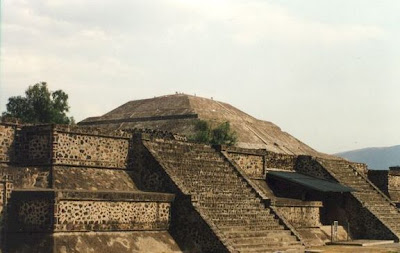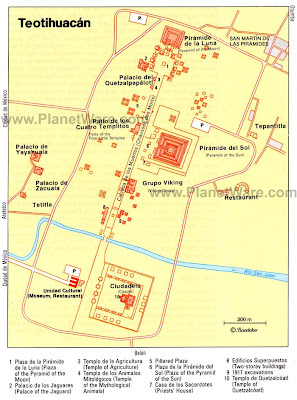
This is the only city, where you arrive to the sound of brass bands...The lilt and beat is unmistakable: it has to be Mexico! This is a city that believes in giving you a first hand introduction to its cultural heritage, right from the moment you land.
Beginning with the musical welcome at the airport, to the hotel where I chose to stay, the entire 2-day visit was like a blur of colour. It was my first occasion to stay in a room with daring purple walls and pink cushions and after the first initial shock, I had to admit it was fun and rather uplifting.
I set out in the afternoon to visit the UNESCO World Heritage site of Teotihuacan, the city of ancient Mayan pyramids, 30 miles away, a two hour drive was what I was told. After fortifying myself with an enormous cheese and avocado sandwich, bought from a roadside vendor (much to the disgust of my gum-chewing cab driver Manuel), we drove south.
The countryside was a great deal like India, the road surface indifferent, and plenty of grinning grubby children ready to crowd around whenever we stopped. Obviously there were very few Indians (of our subcontinent, that is!) on these roads and my saree and bindi were enough cause for merriment.
Intrigued by upturned terra-cotta pots on the roofs of a large number of houses, I stopped to ask the reason. I was told that it keeps the houses cool in the hottest weather, especially if one sprays some water on the pots. Some part sof India resort to the same measure so there may just be a connecton there! Most of the house were painted white but it is apparent that everyone is not well off in Mexico. Along with some rather bushy looking trees, there were the cactuses spread all over.
We reached the Mayan Pyramids at 3 pm. Teotihuacan or The Place Where Gods Were Made, is one of the world's most awesome ancient sites. Teotihuacan, is said to have dominated central Mexico for a thousand years, and then was mysteriously abandoned in about 650AD. Its Temple of the Sun is the said to be one of the largest pyramids in the world and the largest in what is described in Mexico parlance as the 'New World'.
The 7 sq mile site includes 75
 temples, 2000 residences and 600 workshops. There are palaces of various sizes and there is still much to see unlike the Mohenjodaro and Harappa sites closer to us.
temples, 2000 residences and 600 workshops. There are palaces of various sizes and there is still much to see unlike the Mohenjodaro and Harappa sites closer to us.Teotihuacán was a large settlement by 150BC, its importance probably arising from a cave system with religious significance, located underneath the present day Pyramid of the Sun. As other settlements declined, Teotihuacán flourished and became a religious and economic center, controlling the region’s production of obsidian (the black stone used to make weapons and utensils).
Interestingly, there are no depictions of warfare or human sacrifice in the carvings and murals at Teotihuacán, unlike many contemporary cities in Mexico.
As I drove up, even though it was afternoon, there was a sort of mist haze and Teotihuacan's pyramids and palaces seemed to rise up like ancient mysteries being born anew. It was too large an area for me to visit in totality on foot. Manuel had warned me that the sun gets very hot and I should get myself a straw hat.
He was a bit taken aback when I just covered my head with my pallu. But he was right, it was hot and I managed to take my photos and see as much as possible in the hour and a half that I had allowed myself. The shops were inviting me with their Coca Cola hoardings, and it was a relief to sit down for a while and just look at the magnificence of this ancient site.

Before heading back to the hotel, I allowed Manuel to take me to a crafts entre. The one I visited was created in the Pueblo style with mud walls. Manuel called one of shop assistants to explain how tequila is made, and then for a whirlwind tour of the workshop, with its multiple looms for rugs and blankets. There were also a whole range of ponchos on sale, something that I simply could not resist. The silverware on sale was also special and I found myself buying a bangle carved with bulls and matadors.
Teotitlan is Mexico's most famous weaving village and I was told that after trying out synthetic dyes, the weavers have gone back to natural colours derived from insects, plants and seashells. The designs are also similar to what one sees in durries in India - the affinity with India is strong. Maybe it’s all Maya after all!
No comments:
Post a Comment